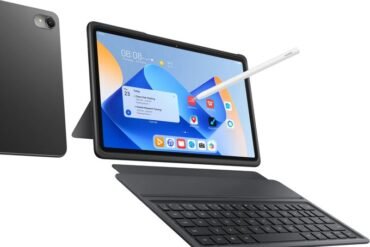The Ins and Outs of PC Power Connectors and Cables
Table of Contents
Introduction to PC Power Connectors
When it comes to building or upgrading a PC, understanding the various power connectors and cables is essential. PC power connectors are used to supply power to different components within a computer system, ensuring that they function properly. Whether you are a beginner or an experienced PC enthusiast, having a good grasp of these connectors will help you troubleshoot issues, make informed decisions, and ensure compatibility.
Here is a brief overview of some of the most commonly used PC power connectors:
- ATX 24-pin Power Connector: The ATX 24-pin power connector is the primary power supply connection for modern motherboards. It delivers power to the CPU, RAM, and other components on the motherboard.
- EPS 8-pin Power Connector: The EPS 8-pin power connector, also known as the CPU power connector, is used to provide power to the CPU. High-performance CPUs and motherboards often require this connector for stable power delivery.
- PCIe 6/8-pin Power Connector: The PCIe power connector is used to supply power to graphics cards and other PCIe devices. Depending on the power requirements of your GPU, you may need either a 6-pin or 8-pin connector.
- SATA Power Connector: The SATA power connector is used to provide power to SATA devices such as hard drives and SSDs. It is a smaller, flat connector typically found on modern power supplies.
- Molex Power Connector: The Molex power connector, also known as the peripheral power connector, is an older type of connector used for various peripherals such as fans, optical drives, and older hard drives. It is gradually being phased out in favor of SATA power connectors.
- Floppy Power Connector: The floppy power connector, as the name suggests, is used to provide power to floppy disk drives. It is a smaller, four-pin connector that is rarely used in modern PC builds.
Understanding these power connectors and their purposes is essential for connecting and powering your PC components correctly. It is important to ensure that your power supply unit (PSU) has the necessary connectors to support your hardware. Additionally, when connecting these cables, be mindful of their orientation and alignment to avoid damage.
By familiarizing yourself with PC power connectors, you can confidently build, upgrade, and troubleshoot your PC system, ensuring optimal performance and compatibility.
Types of PC Power Cables
When it comes to building or upgrading a PC, understanding the different types of power cables is essential. These cables are responsible for delivering power to various components within the computer. Here is a breakdown of the most common types of PC power cables:
- ATX 24-pin: This cable is used to connect the power supply to the motherboard. It provides power to the CPU, memory, and other motherboard components.
- ATX 4-pin/8-pin (CPU power): This cable provides additional power to the CPU. It is essential for high-performance processors and is often found near the CPU socket on the motherboard.
- PCIe 6-pin/8-pin: These cables are used to power graphics cards. High-performance GPUs often require additional power beyond what is provided by the motherboard.
- SATA power: SATA power cables are used to connect storage devices such as hard drives and SSDs. They provide power to these devices, allowing them to function properly.
- Molex: Molex cables were once commonly used to power various peripherals such as fans, older hard drives, and optical drives. However, they are becoming less common in modern systems.
- EPS 8-pin: This cable is similar to the ATX 4-pin/8-pin CPU power cable but is used for powering server motherboards and higher-end workstation motherboards.
- Floppy power: Floppy power cables are used to power floppy disk drives. However, these drives are rarely used in modern systems.
By understanding the different types of PC power cables, you can ensure that you have the appropriate cables for your specific build or upgrade. It is important to note that power supplies may come with a variety of cables, so it is essential to check their compatibility with your components. Additionally, cable management is crucial for maintaining a tidy and well-ventilated computer system.
Understanding Power Supply Units
A Power Supply Unit (PSU) is a crucial component of a computer that provides the necessary electrical power to all the other components. It converts the alternating current (AC) from your wall outlet into direct current (DC) that is used by the computer’s internal components.
Here are a few key points to help you understand power supply units:
- Power Output: PSUs come in different wattage ratings, typically ranging from 300W to 1000W or more. The power output required depends on the components in your system and their power demands. It’s important to choose a PSU that can deliver enough power to support your system’s needs.
- Efficiency: PSU efficiency is measured in terms of the percentage of AC power it converts into DC power. Higher efficiency means less wasted energy and lower electricity bills. Look for PSUs with an 80 Plus certification, indicating their efficiency rating.
- Modularity: Some PSUs offer modular cables, allowing you to connect only the cables you need. This helps with cable management and improves airflow within the case. Non-modular PSUs have fixed cables, which may result in a cluttered case and restricted airflow.
- Connectors: PSUs come with various connectors to power different components. The most common connectors include the 24-pin ATX connector for the motherboard, 4/8-pin CPU connectors, SATA connectors for storage drives, and PCIe connectors for graphics cards. It’s crucial to ensure that your PSU has the necessary connectors for your components.
- Power Protection: PSUs provide various protection features to safeguard your components from power fluctuations, such as overvoltage, undervoltage, and short circuit protection. These protections help prevent damage to your hardware and ensure its longevity.
Understanding power supply units is essential when building or upgrading a computer. Choosing the right PSU that meets your system’s power requirements, offers high efficiency, and provides the necessary connectors will ensure stable and reliable power delivery to all your components, enhancing the overall performance and longevity of your system.
Connecting Power Cables to Components
When it comes to building or upgrading a PC, one of the most important aspects to consider is the proper connection of power cables to components. Ensuring that the power supply is correctly connected to all the necessary parts is crucial for the overall performance and stability of the system. Here are some key points to keep in mind when connecting power cables:
- Identify the power connectors: Before you start connecting the cables, it’s essential to identify the power connectors on both the power supply unit (PSU) and the components. The most common power connectors include the 24-pin ATX, 8-pin CPU, 6-pin PCIe, and SATA connectors.
- Match the connectors: Each component requires a specific type of power connector. It’s important to ensure that you match the connectors correctly to prevent any damage or compatibility issues. Refer to the component’s manual or specifications to determine the right power connectors.
- Route cables neatly: To achieve good cable management and optimal airflow, it is crucial to route the cables neatly. Use cable ties or Velcro straps to secure and organize the cables. This not only enhances the aesthetics of the build but also improves airflow, reducing the risk of overheating.
- Don’t force connections: When connecting power cables, it’s important not to force any connections. The connectors are designed to fit snugly together, so if you encounter resistance, double-check that you have aligned the connectors correctly. Forcing connections can lead to damaged pins or components.
- Double-check connections: After connecting all the power cables, it’s crucial to double-check each connection to ensure they are secure. Loose connections can cause intermittent power supply issues or even system failures. Take a few moments to visually inspect each connection before closing up the case.
Properly connecting power cables to components is essential for the overall functionality and performance of a PC. By following these guidelines, you can ensure a smooth and reliable power supply to all your components. Remember to refer to the manuals or specifications of your components to ensure the correct power connectors are used.
Troubleshooting Power Connection Issues
If you are experiencing power connection issues with your PC, it can be frustrating and hinder your ability to use your computer effectively. However, with some troubleshooting, you can often identify and resolve these issues on your own. Here are some common power connection problems and their solutions:
- No power: If your PC is not turning on at all, check if the power cable is securely connected to both the power outlet and the computer’s power supply. Ensure that the power outlet is working by plugging in another device. If the outlet is functioning, try a different power cable or power supply unit.
- Intermittent power: If your PC randomly shuts off or restarts, it could be due to a loose power connection. Make sure all power cables are tightly connected to their respective ports. Additionally, check the power button on the computer case to ensure it is not stuck or faulty.
- Power surges: If your PC experiences sudden power surges or voltage fluctuations, it can damage the internal components. To protect your computer, consider using a surge protector or an uninterruptible power supply (UPS). These devices can regulate the flow of electricity and provide a buffer against power fluctuations.
- Power supply failure: If your PC is not receiving any power, even after checking all connections, it is possible that the power supply unit (PSU) has failed. This can occur due to age, electrical issues, or other factors. In such cases, it is recommended to seek professional assistance for replacing the PSU.
- Overheating: Inadequate cooling can lead to power-related problems. Ensure that your computer’s cooling system, including fans and heatsinks, is functioning properly. Clean out any dust or debris that may be obstructing airflow. Overheating can cause the PC to shut down or experience unstable power connections.
Remember, if you are uncomfortable troubleshooting power connection issues on your own, it is advisable to seek assistance from a professional. With proper care and regular maintenance, you can ensure a reliable power connection for your PC, preventing potential problems and maximizing its performance.



























